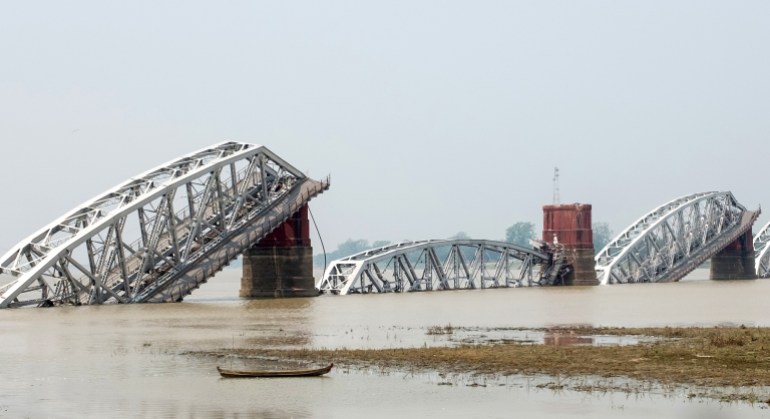Sagaing, Myanmar – “Now with every gust of wind, the smell of dead bodies fills the air,” says Thar Nge, a resident of Sagaing – the city closest to the epicentre of the devastating magnitude 7.7 earthquake that struck Myanmar on Friday.
“At this point, more bodies are being recovered than survivors,” Thar Nge told Al Jazeera on Sunday, explaining how rescue workers from nearby Mandalay had just arrived in Sagaing earlier in the day, after the Yadanabon Bridge, spanning the Irrawaddy River, reopened.
The nearby Ava Bridge, built some 90 years ago during British colonial rule, was among the many structures to collapse when the quake hit more than 48 hours ago, killing at least 1,700 people and injuring more than 3,400 – a preliminary casualty toll that is certain to rise as the full extent of the catastrophe becomes known in the coming hours and days.
“Rescue teams from Mandalay couldn’t reach us immediately because a bridge collapsed. That’s why they only arrived today,” said Thar Nge, surveying the ruins of the city and telling how he had now lost hope of finding his son alive.
He said many in the city had lost loved ones.

Almost 90 bodies have been recovered so far – that Thar Nge knew of – compared with 36 people rescued from their flattened homes, businesses and the numerous Buddhist temples in the area.
“Many people, as well as monks and nuns in Sagaing, have been trapped under buildings, including monasteries and nunneries,” he said.
“The focus is shifting from rescuing the living to retrieving and burying the dead.”
The smell of decaying bodies is everywhere in Sagaing.
In Mandalay, the country’s second largest city located 22km (14 miles) to the east, a shortage of specialised equipment has left rescue workers and the relatives of people trapped digging with their bare hands to find survivors.
Conditions are harsh.
Along with crumpled roads, entire blocks of buildings either badly damaged or destroyed, and power cut to most of Mandalay and Sagaing, both cities sweltered in temperatures as high as 39 degrees Celsius (102 degrees Fahrenheit) on Sunday.
Earlier, a distraught Ko Lin Maw could do little but wait for help at his toppled home in Mandalay.
“My mother and my two sons are still trapped under the debris,” he told Al Jazeera.
Even if he could get a signal on his mobile phone to call for help, the few rescue teams in Mandalay are prioritising larger sites of disaster where many people are believed trapped, Ko Lin Maw said.
“The number of rescue workers is clearly not enough to save victims,” he said, lamenting that 48 hours had passed since the earthquake hit and neither an adequate number of emergency workers nor aid supplies had yet reached the city.
Myanmar fire department worker Htet Wai arrived in Mandalay on Sunday morning from the country’s commercial capital, Yangon, located 627km (390 miles) to the south.
With communications in the aftermath of the quake severely hampered, leaving barely-working mobile phone services and sketchy internet connections, Htet Wai told how his team had relied on information posted on Facebook to determine where their assistance was needed most.
“This morning, as soon as we arrived, we went to a location we had found online,” Htet Wai said.
But their first attempted rescue ended up being the recovery of a body, he said.

Htet Wai said he and his colleagues would remain hopeful despite the situation being so dire.
“With this heat, I fear we will find more bodies than survivors. But we will do our best to save as many lives as possible,” he told Al Jazeera.
Alongside more skilled rescue workers and heavy equipment to move rubble, there was an urgent need for body bags, he said.
Weather forecasts predict that this central part of Myanmar could see daytime temperatures reach 40C (104F) and above this week, and Htet Wai said the bodies of those who have died and are still trapped under buildings are decaying rapidly.
“The body we found was already decomposing. It’s heartbreaking,” he said.
“This is beyond what we can handle alone,” he added.
